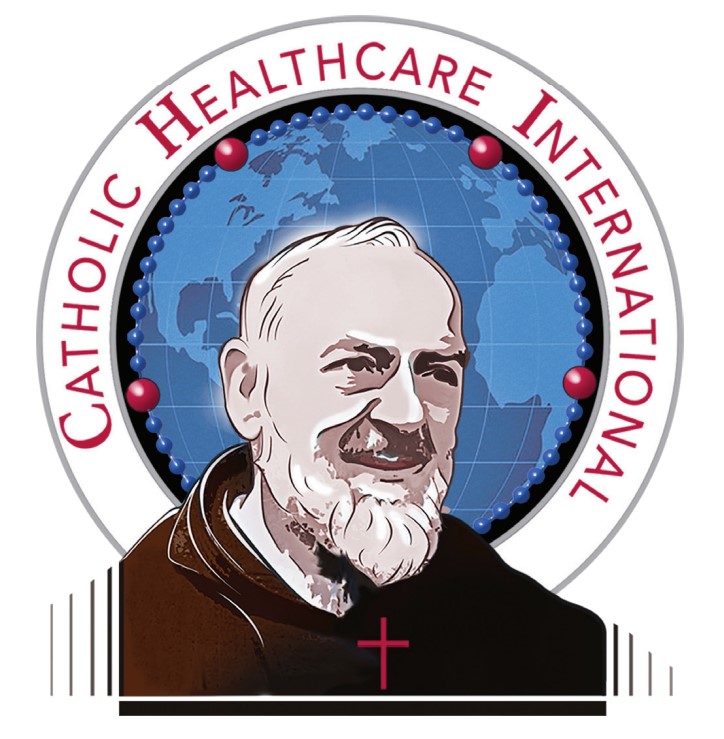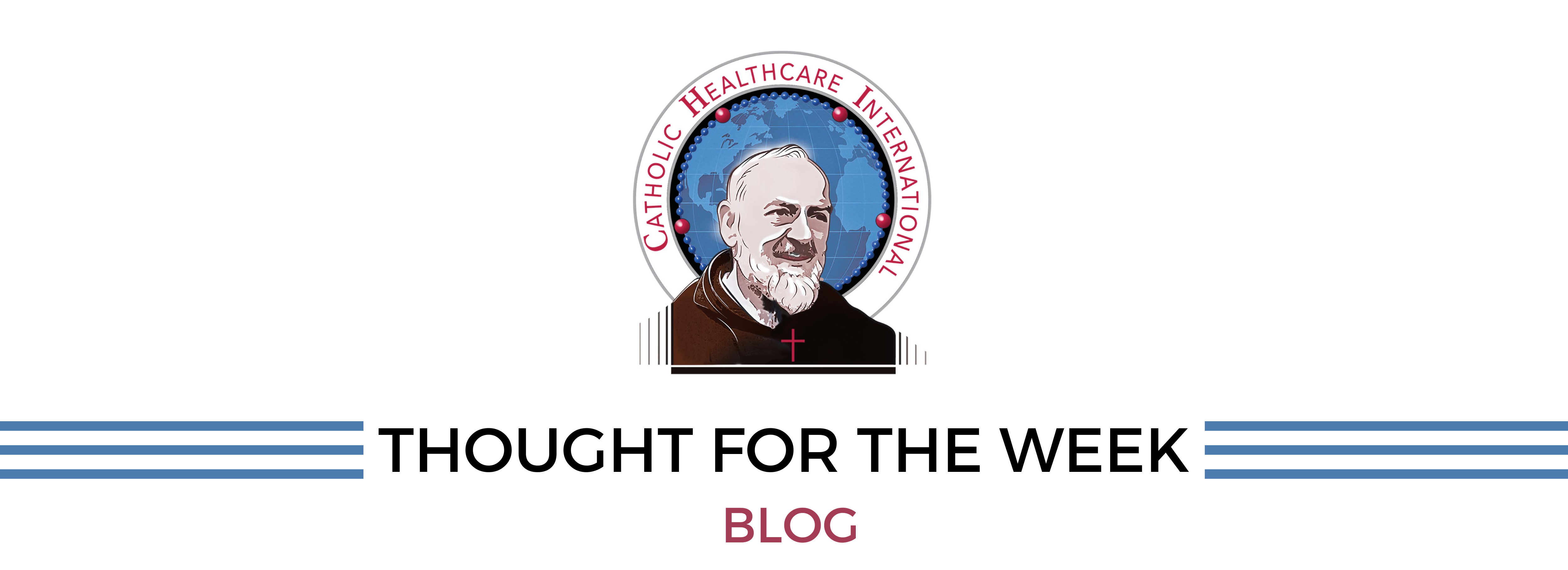|
Listen to the Thought for the Week
Getting your Trinity Audio player ready...
|
I’ll Get You My Pretty, and Your Little Heart Too!
The human body is a wonderful and intricately designed machine. It is a repository for the immortal soul while on earth. Physiologic systems hold endless complexity and wonderous interconnection to allow man to function, thrive and interact with the environment. And while atheists may say that this is all an evolutionary convergence of a trillion random cells over billions of years, the elegance of human anatomy and physiology, when rationally and objectively examined, is more than sufficient proof for the existence of God and intelligent design. The double helix of DNA, coding for every protein in the human body, is simultaneously elegant, intricate and brilliant. Given this, the existence of an intelligent creator, God, is actually the simplest and most straightforward explanation for its structure. A random convergence of molecules? Nonsense.
The human machine, however, also ages and deteriorates over time. Its lifespan is limited, and the body is not designed to last eternally. To quote David Byrne, “Things fall apart; it’s scientific.” We physicians, particularly osteopathic physicians, realize that the body is designed to function optimally in its natural state, and our job is to improve health and quality of life by restoring its structure and physiology. We are not intended to live forever, but we are intended to live fulfilled and comfortably, to enjoy the gifts of God, and carry out our earthly missions. Thus, the job of the physician is to treat the sick and relieve suffering, using medical technologies, pharmaceuticals and surgery, following in the footsteps of the Great Healer and evangelizing the Good News of Jesus Christ.
I suspect that, in 200 years, history will look back at the medicine of today, much as the way we look at ancient practices of bloodletting and trepanation. Our current ability to treat damaged or malfunctioning organs is largely by organ transplantation. A difficult and imperfect technology, but sometimes the only option in our present state of knowledge.
Every day in the United States, 17 people die awaiting an organ transplant (1). The demand for donor organs far outstrips supply. Part of the reason for this is current limitations with the preservation of organs following the death of the donor. Some organs and transplantable body parts, such as corneas, skin and heart valves, are stable and useable for days to weeks (or longer) after donation. Others, such as kidneys, a day, while livers, hearts and lungs must be transplanted into the recipient within 3 to 4 hours following harvest. Most organs need oxygen to survive. The limitation in organ transplantation is what is called “cold ischemic time.” This is the time that an organ can be without oxygen and still survive. Ischemic time starts at the moment an organ is removed from a donor and ends when blood flow is restored to the organ from the recipient. The “cold” comes from the technique of cooling the organ once removed, using ice, or other methods, to decrease its metabolism and requirement for oxygen, extending the time the organ can survive without blood flow. For example, the maximum cold ischemic time for a heart is 4 hours (2). This means a heart must be removed from a donor, transported to the location where a recipient is present and re-implanted, all within 4 hours. To say it is a race against time is an understatement. When the maximum cold ischemic time is exceeded, the organ functions poorly and may result in the death of the recipient.
You can imagine, thus, the complexities in coordinating the donors, recipients, and surgical teams to successfully transplant organs, particularly the time-sensitive stars of the show, hearts at 4 hours and livers at 12 hours (2).
In the early days of organ transplantation, this was an almost insurmountable challenge. Organs can only be removed from dead persons (unless you are in China, North Korea, and coming soon, Canada? But that is a topic for another time). A person cannot be killed to obtain his or her organs, even if that person is critically ill without hope of survival. Today, the concept of brain-death exists. A person can legally be declared dead if they meet certain criteria to determine that their brain has died. The body’s other systems can function, for a very long time, in someone who is brain-dead. Their heart beats and circulates blood, their lungs oxygenate the blood and remove carbon dioxide (assisted by a mechanical ventilator), their kidneys filter the blood and the liver retains its metabolic and synthetic qualities. The patient is defined as dead because the brain is irreversibly dead, without blood flow and without the ability to make the patient breathe without mechanical means, move or otherwise interact with the environment. The electroencephalogram (EEG), the measure of the brain’s function by electrical activity, is flat, showing the function of the brain cells. So, the rest of the body continues reflexively, on autopilot if you will, even though it is “dead.” The concept and legal framework for brain death came about in 1968 (3). Without a living brain, the remainder of the body’s processes can continue if on a mechanical ventilator, for about a week or so (4). Prior to the concept of brain death, a person could only be considered dead and eligible for organ donation, when their heart stopped and could not be restarted. Given the limitations of cold ischemic time, transplantation of time-sensitive organs was nearly impossible, but not impossible.
Most people credit Dr. Christian Barnard, of South Africa, for performing the world’s first heart transplant. That is not entirely true. It is more accurate to say Dr. Barnard performed the first successful human heart transplant in 1967. In January of 1964, however, Dr. James Hardy performed the world’s first heart transplant at the University of Mississippi Medical Center in Jackson, Mississippi. Why the lack of fanfare?
I spent many years of my medical career at the University of Mississippi and have had the singular honor of administering anesthesia to Dr. Hardy when he himself required coronary bypass surgery. Dr. James Hardy was one of the giants of American cardiac surgery. He trained generations of excellent cardiac surgeons and is responsible for many of the techniques that have made cardiac surgery the lifesaving technology it is today. Like many of our nation’s pioneering surgeons, he ventured boldly into unexplored medical territory, in an attempt to save lives and improve health, when there were no known treatments or alternatives. One of these territories was cardiac transplantation.
In January 1964, Boyd Rush was admitted to the University of Mississippi Medical Center in heart failure, having been found comatose and unresponsive at home. Despite the best efforts and pharmaceuticals available at the time, Mr. Rush was dying and in cardiogenic shock. The potential of cardiac transplantation had been speculated about in medical journals and there were animal experiments demonstrating that the procedure could, theoretically, be done. At the time of Mr. Rush’s admission, there was another patient in the Mississippi intensive care unit who was dying from head injuries sustained in an automobile accident. In considering the case of Mr. Rush and the patient from the auto accident, the medical team thought the patient from the auto accident’s heart would stop, and the patient would die, in a fashion that would be timed to permit his heart to be transplanted into Mr. Rush. Mr. Rush’s sister consented to the procedure and the surgical teams began preparation for the choreographed procedures. As the adage goes, “Man plans, and God laughs.” Mr. Rush abruptly deteriorated and was emergently brought to the operating room and placed on a heart-lung machine to await his new heart. Then, the patient from the intensive care unit did not die. “Life finds a way,” to quote another saying. So, Dr. Hardy was faced with an impossible choice. Mr. Rush was on the heart-lung machine, a time-limited technology, particularly in 1964, with no donor heart. Without a new heart, Mr. Rush could not come off the heart-lung machine, and shutting the machine off would cause him to die. What to do? They were still decades away from anything approaching an artificial heart. There was, however, the animal laboratory. In the middle of a January night, Dr. Hardy made the bold decision to transplant a chimpanzee heart into Mr. Rush. He did so and was able to bring Mr. Rush off the heart-lung machine, but the heart beat for only 90 minutes before it stopped and Mr. Rush died (5). Sobering, and, given the political climate in Mississippi in 1964, it is understandable that it took many more years for heart transplantation to be more fully developed, using brain-death criteria.
Recently, the multi-billion-dollar organ transplant industry (make no mistake, the organ transplant agencies are fully part of the medical-industrial complex) has again turned its eye to donation after cardiac death (DCD, to use their acronym). After all, many more people die following their heart stopping than those who suffer brain death. Additionally, many people are in comatose or minimally conscious states, but not “dead” and not eligible for organ donation/harvesting, even if it is the wish of the patient and/or family to donate their organs. As we have previously discussed here, it is ethically permissible for a patient or responsible surrogate medical decision-maker to withdraw extraordinary life support and donate organs after the heart stops (6). The problem becomes the ischemic time that we have previously addressed. While medical technology has advanced, time is time, and hearts donated after simple cardiac death tend not to function well. If only there was some way to better preserve the organs after the heart stops “naturally”…
The medical-industrial complex found a way, and this is now being touted as a “game-changer” for organ transplantation (7). There are two basic methods utilized for heart transplantation after cardiac death (and the heart is the diva here. To paraphrase Young Frankenstein, kidneys and livers are just tinker toys! (Hilarious movie and highly recommended)). In the direct procurement method, developed in Australia, extraordinary life support, that is, the ventilator, is withdrawn from a living but comatose patient and the heart stops after a few minutes of the patient not breathing. Once the heart stops, the transplant team waits an additional amount of time, usually 5 minutes, and the heart is then removed and placed into a special transport box, which provides blood and oxygen to the now-removed heart, permitting it to be transplanted to a recipient with better results and without as much of an ischemic time crunch. So far so good, albeit just a little creepy. (Again, I picture Marty Feldman, as Eye-gore, looking up and saying, “What do you mean, creepy?”) The second, from England, goes by the term Normothermic Regional Perfusion (NRP) (I am always wary of acronyms, like Aktion T4 or ZEF) and is where the ethical train goes off the rails. In NRP, a patient in a comatose state, not dead enough for a diagnosis of brain death, or more plainly, still alive, has the ventilator removed and, as in direct procurement, the heart stops after a period of time and there is an additional wait of around 5 minutes afterward. This time, instead of removing the heart, the heart is placed on a heart-lung machine to be provided with oxygen and nutrients. It will usually start beating again. To ensure the patient stays dead, or at least their brain stays dead, the blood vessels leading from the heart to the brain are clamped, or otherwise occluded. The heart is then prepared and removed for donation in a method similar to that of a brain-dead donor. Is anyone out there uncomfortable yet? A person is pronounced dead because of the heart stopping and an irreversible loss of circulatory function, but the heart is then placed on a heart-lung machine to keep it fresh, while the brain is clamped off to assure it stays dead. This sort of death, at least of the heart, happens thousands of times a day in the US during the normal conduct of open-heart surgery. The heart is stopped and placed on a heart-lung machine to allow the surgeons to do their repair work, and it is then restarted, and the surgery is completed. Of course, in the case of open-heart surgery, the brain receives blood and is kept alive (we’re not in China, after all). It seems like NRP is taking advantage of a loophole or technicality, by facilitating cardiac death, and then keeping the heart “alive” after a brief interval of “death”. (Again, I can picture Marty Feldman saying, “Well, that is creepy,” as he is carrying the monster’s new brain in a jar labeled “abnormal.”)
The utilitarians out there are probably thinking, “So what? The nearly dead patient has no chance of a meaningful recovery, and their heart can go to someone who can be saved and go on to live a longer life. You Catholics are all hung up on this life business.”
Anytime someone starts using terms like “meaningful life” and “unsurvivable” be careful. Be especially careful of phrases and euphemisms like, “He would not want to be kept alive like that.” And “We are ending his suffering.” As we have often said, this is a slippery slope. Meaningful is in the eye of the beholder, not the beheld. History has shown us, over and over again, that it is pretty easy to go from meaningful, equaling conscious and interacting with the world, to being conscious and Aryan or Hutu and “not worthy of life,” expanding to being Jewish, disabled, elderly or undesirable. The utilitarian counterpoint will be, “The slippery slope is ridiculous and denying people organs is wrong.” And “In a well-regulated system, this is a non-sequitur.”
Perhaps, but what about Ryan Marlow?
Ryan Marlow was a pastor of 17 years in Wilkesboro, North Carolina. Married 16 years to Megan and had young children, he went to the Atrium Health Wake Forest Baptist Medical Center complaining of dizziness and vertigo. Over a couple of weeks, Ryan’s condition deteriorated, with him losing mobility and the ability to swallow. He required the placement of a breathing tube and was placed on a mechanical ventilator. Eventually, Ryan was diagnosed with a listeria infection, a serious, but treatable condition. Before the treatment could be effective, however, he suffered a cerebral hemorrhage, that is, a blood vessel had ruptured in his brain, and he had severe bleeding into his head. The doctors, after a series of three tests, declared that Ryan Marlow had died, as his brain met the criteria for death. He was declared clinically dead, and a time of death was even listed on a death certificate. As he was an organ donor, an organ harvesting surgery was scheduled to follow in 2 days. On the day Ryan was scheduled for the procedure, however, his wife received a call from the hospital stating that Ryan was not dead. He had now joined those “unlikely to recover” and having “no meaningful existence.” This did not change the organ procurement plan, however, to quote the Yahoo News story, “The only thing the discovery would change, Megan said the doctor told her, would be the official time of Ryan’s death, which would now be recorded the following day, when he would be extubated following the organ removal (8).” Taking this at face value, it appears that Atrium Wake Forest Baptist was taking NRP a step further by planning to harvest Ryan Marlow’s organs while he was still alive! It is hard to believe that this would be the case (outside of China, or maybe Canada) and we reached out to Atrium Wake Forest Baptist for comment or clarification. They did not return our call.
Reading farther along, it does appear that Atrium Wake Forest Baptist may have planned NRP or another method after withdrawal of life support and cardiac death, as the article continued, “Megan almost didn’t make it to the hospital on Tuesday, August 27 — the day her husband was to be removed from life support, she said in a Facebook Live video. She simply couldn’t bear to watch him take his last breath (8).”
Regardless of the specifics, Ryan Marlow was not dead, and his organs were planned for harvest either before or after the hospital facilitated his death. His condition was, after all, “irreversible.” Family members gathered in Ryan’s room to say goodbye before the planned surgery, playing videos of him laughing and playing with his children. Megan then noticed Ryan’s toe move. She called off the surgery minutes before it was scheduled to begin, and insisted on more tests. These tests showed there was still blood flow in Ryan’s brain. Details are hard to find (as they often are when the course of a hospital stay is “sketchy” (from my perspective, a lot of things don’t add up about Ryan’s case)), but Ryan was eventually transferred to another hospital and underwent intensive rehabilitation and other treatment. By October 6, about five weeks after he nearly had his organs removed, Ryan Marlow awoke from his coma. He continued rehabilitation and after six months, he returned home to his family, alert, communicating, and interacting with his children. He is profoundly disabled and communicates with sign language and gestures, but he is alive, a husband to his wife, and a father to his children.
Organ procurement and donation is a big business in the US. The various organ procurement agencies are poorly regulated, self-policing and have highly variable success rates. Reimbursed by Medicare and other payers as treatments of last resort, the agencies sit on hundreds of millions of dollars in excess revenue and have a cadre of highly compensated employees, with the average director’s salary at over $450,000 per year and some making up to $2 million (9). I suspect your local organ procurement agency is located in a pretty nice, fashionable steel and glass building that competes favorably with banks, law firms and stockbroker’s offices. Liberalizing donation criteria and finding “game-changing” workarounds to make sure donors are “dead enough” to harvest their valuable wares are pretty strongly incentivized by the current reimbursement system. In the US, outright buying and selling of organs is illegal, but highly compensated organ brokers and procurement agencies are not. Doing well by doing good? Indeed, but at what cost to the humanity of the vulnerable ill and injured, the comatose “almost dead enough?”
Like the unborn, the disabled are in a dangerous position. Their care is expensive, difficult and often unfulfilling. It is a lot easier to “end their suffering” because they “wouldn’t want to live like that.” Being paid, handsomely, to facilitate this all combine with the aforementioned is strong motivation to “pull the plug.”
The safest ethical approach, and the one consistent with the Catholic Church, is simple, direct and true. All life, created in the image and likeness of God is precious, cherished and equal, regardless of age, ability, income, desirability or any other modifier. A priori, the life of the 75-year-old in a coma is equal in worth to the 32-year-old executive or 15-year-old student. Any time one draws lines as to which lives are more worthy than others, the lines are redrawn and redrawn until we end up at the gates of Auschwitz, or the doors of Planned Parenthood, on the bodies of 65 million children. The ends do not justify the means and the lives potentially saved by Ryan Marlow’s organs do not justify killing him to obtain those organs. All human life has an inherent and non-negotiable dignity. The purposeful ending of that life is evil, regardless of the good intentions behind the act.
We know that the diagnosis of brain death is difficult and inaccurate up to 20% of the time (10). Additionally, a significant percentage of patients thought to be unconscious and in a coma are actually aware of their surroundings, but unable to communicate or interact with the outside world (10). Given these uncertainties, it is essential that the utmost care is taken when determining that a patient is truly brain-dead before organs are harvested, and expanding the definition of death, or using clever loopholes, like NRP, to make the nearly dead “dead enough” for organ harvesting are simply unacceptable. Finally, the entire concept of brain death leaves us, and many others, uncomfortable. We firmly believe that human life is ensouled at the moment of conception, yet the fetal brain does not develop for many weeks. These embryos, however, are not less human.
How then, are patients, who are diagnosed as brain dead, with beating hearts and otherwise functional physiologic systems, less human than the embryos? Consistency would say that they are not. Does it make a difference that an embryo will eventually grow and develop, while someone, if accurately diagnosed as brain dead, has suffered an irreversible and permanent loss of brain activity? Perhaps, but these do feel like discomforting technicalities. It is clear, however, that NRP after cardiac death is not much different than euthanasia. If it were not, there would be no reason to occlude the blood vessels leading to the head to ensure the brain remains dead while the organs are harvested. For Catholics, it is clear that participating in NRP after cardiac death is evil and a sin.
In 200 years, it is likely that history will see this era as a barbaric transition to a time of artificial organs and organ substitutes, that do not require the philosophical gymnastics around brain death, the nearly dead, and the “dead enough.” Until then, the ends do not justify the means.
This concludes the audio portion of this article. Thank you for listening.

George Mychaskiw II, DO, FAAP, FACOP, FASA
Founding President
Saint Padre Pio Institute for the Relief of Suffering
School of Osteopathic Medicine
References
- https://www.organdonor.gov/learn/organ-donation-statistics
- https://emedicine.medscape.com/article/431140-overview#:~:text=Acceptable%20cold%20ischemic%20time%20(CIT,mortality%2C%20and%20longer%20hospital%20stay.
- De Georgia MA. History of brain death as death: 1968 to the present. J Crit Care. 2014 Aug;29(4):673-8. doi: 10.1016/j.jcrc.2014.04.015. Epub 2014 Apr 26. PMID: 24930367.
- https://www.livescience.com/42301-brain-death-body-alive.html
- Hardy JD, Chavez CM, Kurrus FD, et al. Heart Transplantation in Man: Developmental Studies and Report of a Case. JAMA. 1964;188(13):1132–1140. doi:10.1001/jama.1964.03060390034008
- https://chi-usa.com/perhaps-dr-frankenstein-was-just-misunderstood/
- https://www.medscape.com/viewarticle/988309
- https://news.yahoo.com/north-carolina-pastor-narrowly-escaped-014248736.html
- https://www.pogo.org/investigation/2020/10/heartless-organ-donation-contractors-lobby-against-a-popular-health-care-initiative-while-pocketing-pandemic-relief-loans
- https://www.sgklawyers.com/blog/2018/02/not-brain-dead/


